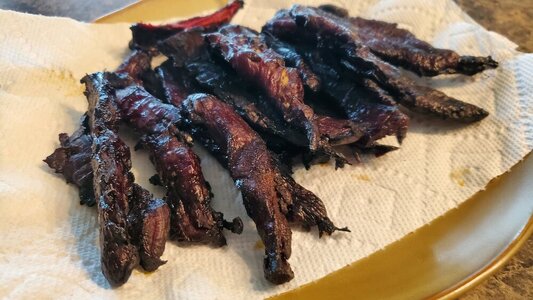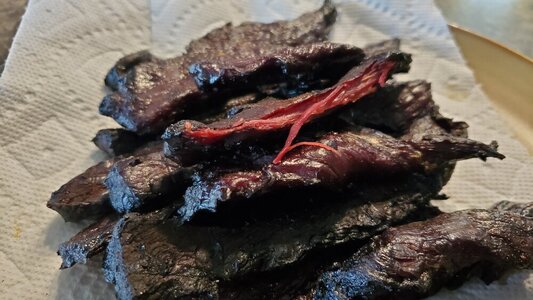I would like to prepare salt pork (and salt beef) of the style that would have been eaten on a sailing ship in the 18th century.
The end result should be shelf stable at room temperature.
I have found a couple of different recipes that use a wet or dry process:
1) Townsends packs the meat into salt, then pours brine over the meat. The meat is stored wet with the lid weighted down. I am not sure sailing ships would carry meat in brine, does anyone know?
2) This period recipe uses freshly slaughtered meat, dry rubs it with a 1:1 mixture of saltpetre and salt at 2 0z/lbs, let's the meat drain for 24h, repeats the process once, and then dry packs it in a 3:1 mixture of salt and sugar at half a pound of mixture for each pound of meat.
How would we approach such a recipe today? Does salt pork need curing salt, or is the tremendous amount of salt enough to suppress botulism? Some dishes call for frying the salt pork, so doing without might be better.
- Brine 1kg meat with 1 cup of water, 2.0 g instacure #1, 1.2 days in ziploc bag in fridge (calculation from https://amazingribs.com/tested-reci...ng-and-injecting/curing-meats-safely/?p=22364)
- Pat dry
- Vacuum seal meat with 50% w/w of 3:1 salt and sugar (dry) or add enough water so that the meat stays wet?
Is whet or dry better? What would be the minimal amount of salt to use? The end product would have to be soaked before eating, so less salt is better.
Is the sugar necessary? Given the cost of sugar in the past, I don't think regular salt pork would have used anything other than regular salt.
The end result should be shelf stable at room temperature.
I have found a couple of different recipes that use a wet or dry process:
1) Townsends packs the meat into salt, then pours brine over the meat. The meat is stored wet with the lid weighted down. I am not sure sailing ships would carry meat in brine, does anyone know?
2) This period recipe uses freshly slaughtered meat, dry rubs it with a 1:1 mixture of saltpetre and salt at 2 0z/lbs, let's the meat drain for 24h, repeats the process once, and then dry packs it in a 3:1 mixture of salt and sugar at half a pound of mixture for each pound of meat.
How would we approach such a recipe today? Does salt pork need curing salt, or is the tremendous amount of salt enough to suppress botulism? Some dishes call for frying the salt pork, so doing without might be better.
- Brine 1kg meat with 1 cup of water, 2.0 g instacure #1, 1.2 days in ziploc bag in fridge (calculation from https://amazingribs.com/tested-reci...ng-and-injecting/curing-meats-safely/?p=22364)
- Pat dry
- Vacuum seal meat with 50% w/w of 3:1 salt and sugar (dry) or add enough water so that the meat stays wet?
Is whet or dry better? What would be the minimal amount of salt to use? The end product would have to be soaked before eating, so less salt is better.
Is the sugar necessary? Given the cost of sugar in the past, I don't think regular salt pork would have used anything other than regular salt.







